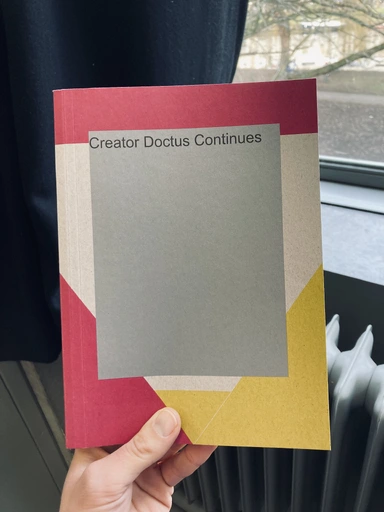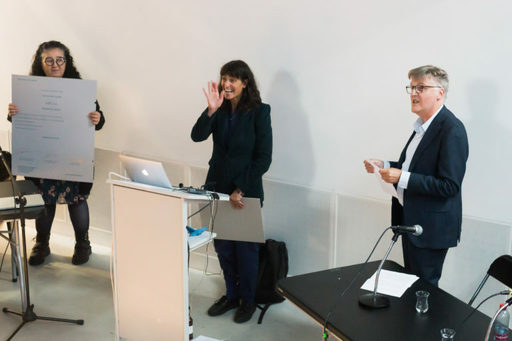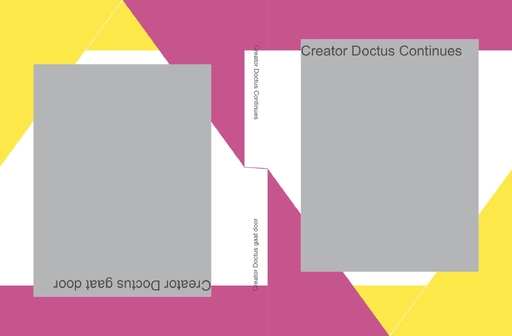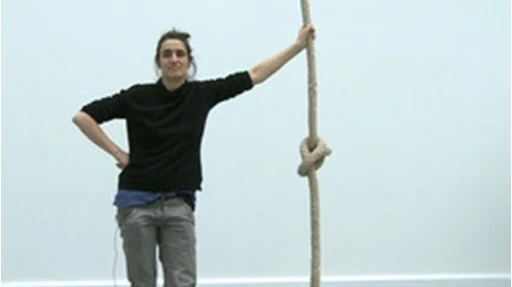output – publication
The publication Creator Doctus Continues (2022) elaborates further on the pilot Creator Doctus (CrD), a new model for post-graduate trajectories in Dutch art education set up by the Gerrit Rietveld Academy in Amsterdam. We share new findings about the CrD trajectory, review the first CrD trajectory (2017-2020) with Yael Davids and introduce the current second CrD trajectory with Femke Herregraven (started in 2019).

The difference between the CrD and a classical, academic PhD is that the CrD candidate’s research focuses on the work of art as both knowledge carrier and main result. It is therefore a trajectory that does not result in a scientific dissertation.
Next to the work of art candidates are only required to produce an account of their research steps. Another important difference is the requirement for a CrD candidate to work with a social partner: a partner willing to associate with, or even co-formulate, the research question of the artist or designer.
This publication is a follow-up to Creator Doctus: Designing the Third Cycle of Art Education (2021) in which the CrD trajectory pilot was introduced. The pilot is constantly and carefully monitored. Discussions are held about its process, protocols and recognizability in terms of ‘research’ as well as the use of criteria and what the role of supervisors and committees are.
This follow-up publication centres on the outcome of these discussions, including text contributions from key pioneers of the project and interviews with stakeholders.
Next to the work of art candidates are only required to produce an account of their research steps. Another important difference is the requirement for a CrD candidate to work with a social partner: a partner willing to associate with, or even co-formulate, the research question of the artist or designer.
This publication is a follow-up to Creator Doctus: Designing the Third Cycle of Art Education (2021) in which the CrD trajectory pilot was introduced. The pilot is constantly and carefully monitored. Discussions are held about its process, protocols and recognizability in terms of ‘research’ as well as the use of criteria and what the role of supervisors and committees are.
This follow-up publication centres on the outcome of these discussions, including text contributions from key pioneers of the project and interviews with stakeholders.
In 2020 Yael Davids was the first candidate to complete the three-year CrD trajectory. Davids’ research A Daily Practice, commissioned by the Van Abbemuseum in Eindhoven, focuses on somatic learning and is inspired by the work of Moshé Feldenkrais (1904-1984).
The second candidate, Femke Herregraven, started in 2019. Her research focuses on the impact of artificial intelligence and the visualisation of data whose deployment can lead to various ecological, social, economic, biological (radical) changes, using positive or more or less catastrophic scenarios.
This research was set up together with the Waag Society and is introduced in this publication. The process and results of her research will be the centre of the next and third publication in this series.
The second candidate, Femke Herregraven, started in 2019. Her research focuses on the impact of artificial intelligence and the visualisation of data whose deployment can lead to various ecological, social, economic, biological (radical) changes, using positive or more or less catastrophic scenarios.
This research was set up together with the Waag Society and is introduced in this publication. The process and results of her research will be the centre of the next and third publication in this series.


research group
Creator Doctus (CrD)
Creator Doctus (CrD)
